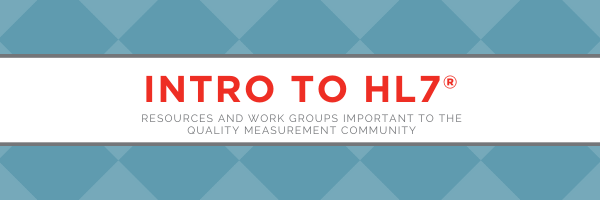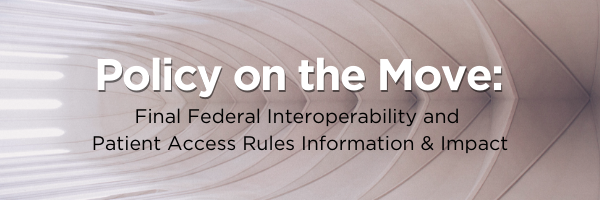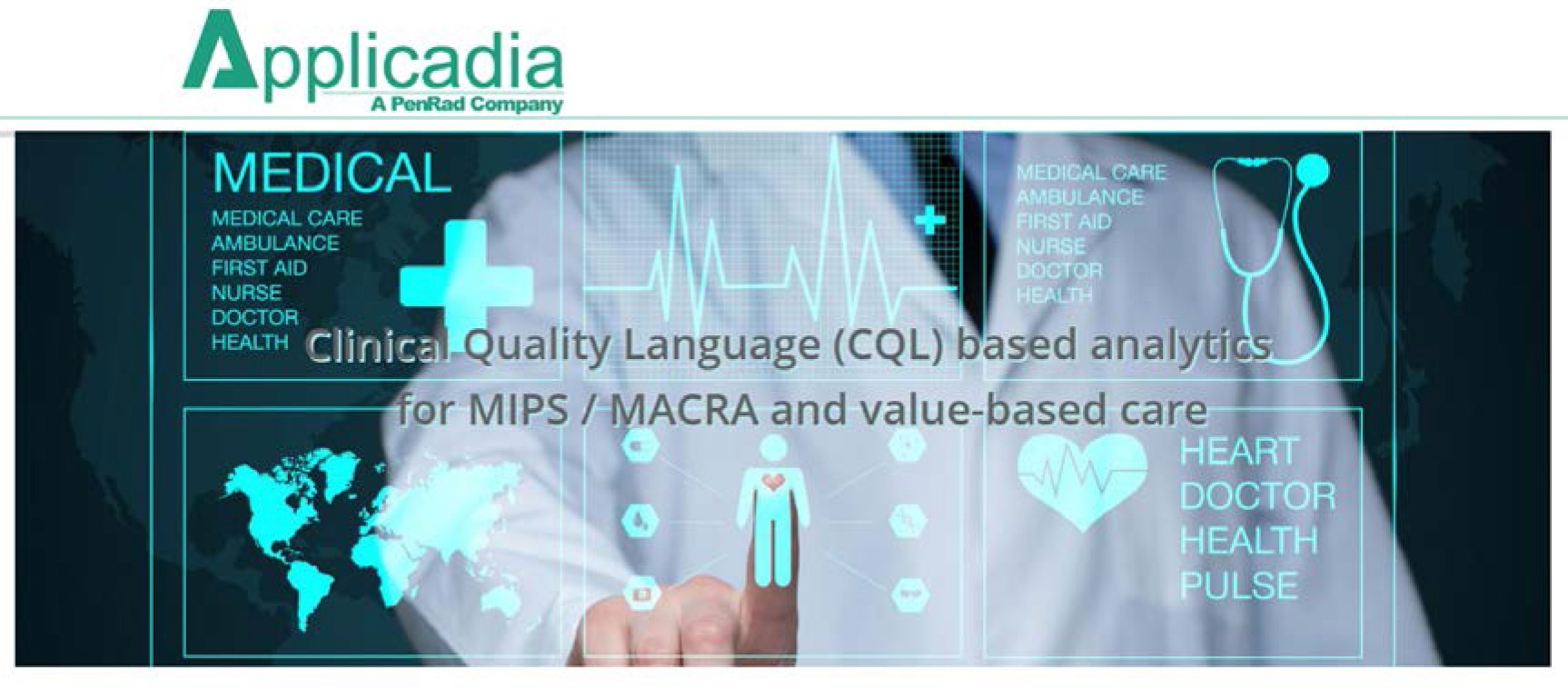This is a time of great health policy discussion and activity, especially given the challenge of COVID-19 and the finalization of significant federal regulations that will now move into the implementation stage. HL7 and its standards, such as Fast Healthcare Interoperabilty Resources (FHIR®), are a strong fiber in these developments. Discussed here are key aspects of the final interoperability, patient access and information blocking rules recently released related to implementing provisions in the 21st Century Cures Act (Public Law 114-155). The intersection of policy, HL7 standards and COVID-19 will be highlighted in this space soon. Stay tuned!
Policy on the Move: Final Federal Interoperability and Patient Access Rules Information and Impact
[fa icon="calendar'] May 14, 2020 2:11:15 PM / by Ticia Gerber posted in FHIR, HL7, health IT policy, interoperability, health IT, CIMI, news, 21st Century Cures, public health, ONC
Intro to HL7® Resources and Work Groups Important to the Quality Measurement Community
[fa icon="calendar'] Dec 9, 2019 12:23:56 PM / by Lisa Anderson, MSN, RN-BC posted in FHIR, interoperability, CIMI, CMS, Da Vinci, Quality Reporting, Clinical Quality Language, DEQM, Quality Data Model, Data Exchange for Qualitiy Measures, QI Core, clinical decision support, clinical quality measures

Health Level Seven (HL7®) drives the standards upon which electronic Clinical Quality Measures (eCQMs) sit, so participation in these venues is crucial. The HL7 community already has a lot of technical input but lacks input from the clinical side – either from clinicians or clinical informaticists. There is a gap between the clinical intent of quality measures and the technical standard, but clinical informatics experts can help bridge this gap by contributing to the conversation and development of the HL7 standards and resources.
How Applicadia Leverages FHIR, CQL and CIMI
[fa icon="calendar'] May 10, 2017 1:11:03 PM / by Richard Esmond posted in FHIR, HL7, HL7 community, interoperability, health IT, CQI, CIMI
How Applicadia Leverages FHIR, CQL and CIMI
The medical software industry often exhibits great reluctance in adopting new approaches and technology. HL7 Fast Healthcare Interoperability Resources (FHIR®), which has been enthusiastically embraced, is an exception. FHIR is in the limelight and is being adopted at an unprecedented rate. However, FHIR also has two other sister-standards that aren’t getting the attention they deserve: Clinical Quality Language (CQL) and the Clinical Information Modeling Initiative (CIMI). When combined with FHIR, CQL and CIMI bring powerful and important capabilities to healthcare platforms that go far beyond what FHIR can deliver on its own.
Applicadia Wins Best in Show at HL7's March 2017 FHIR Applications Roundtable
Applicadia’s mission is to build a suite of tools, components and libraries, that facilitate the integration of FHIR, CQL and CIMI clinical models into existing healthcare platforms.
At the HL7 FHIR Application Roundtable event, Applicadia demonstrated a novel speech-based charting application that leverages Clinical Natural Lanugage Processing (NLP) and CIMI clinical models to capture structured information at the point-of-care, without ever having to touch a keyboard. As a clinician speaks, SNOMED CT and LOINC descriptors are built from his or her statements and used to determine which pre-defined schema (CIMI clinical model) best describes the clinical situation. The system can then prompt for additional information, as necessary, until a fully encoded and computable standards-compliant medical record is produced that conforms to the expectations of its matching FHIR profile.
You can watch the Applicadia demo from the March 2017 FHIR Applications Roundtable by clicking here.



